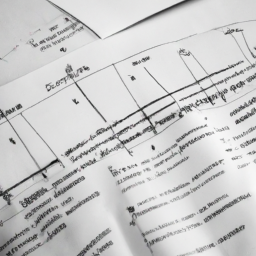

When working with sewing patterns, the grainline is an essential concept that ensures your finished garment will hang and drape properly. Understanding and following the grainline is crucial for achieving professional and polished results in your sewing projects.
The grainline indicates the direction of the fabric’s warp threads, which are the threads that run parallel to the selvage edge. It is usually represented by an arrow on the pattern pieces. Aligning your fabric’s grainline with the pattern’s grainline ensures that the fabric will drape and hang correctly on the body.
Why is the Grainline Important?
Aligning the grainline correctly is crucial because it affects how your garment fits, hangs, and drapes. Fabric has more stretch along the crosswise grain (perpendicular to the selvage edge) than the lengthwise grain (parallel to the selvage edge). By aligning the grainline correctly, you can control the amount of stretch, ensuring that your garment retains its shape and doesn’t distort when worn.
Finding the Grainline
Most sewing patterns include a grainline indicator on each pattern piece. It is typically a straight arrow line. To find the grainline on your fabric:
- Start by identifying the selvage edges of your fabric, which are usually the finished edges that don’t fray.
- Lay out your fabric on a flat surface, making sure it is smooth and without wrinkles.
- Using your pattern piece, align the grainline indicator arrow parallel to the selvage edge of the fabric.
- Pin the pattern piece in place, ensuring it doesn’t shift or distort the fabric.
- Before cutting, double-check that the grainline is straight and aligned correctly.
Tips for Working with Grainline
Here are some additional tips to keep in mind:
- Always pay attention to the grainline and follow the pattern instructions carefully.
- When laying out your pattern pieces, make sure they align with the grainline of the fabric for consistent results.
- Use weights or pins to secure your pattern pieces before cutting to ensure accuracy.
- If your fabric is slippery or stretchy, you can stabilize it by using stay tape or interfacing along the grainline.
- Marking the grainline with a tailor’s chalk or fabric marker can help you visualize and follow it accurately.
By understanding and respecting the grainline, you’ll be able to create garments that fit and hang beautifully. Take your time when aligning the grainline, and the results will be worth the extra effort!